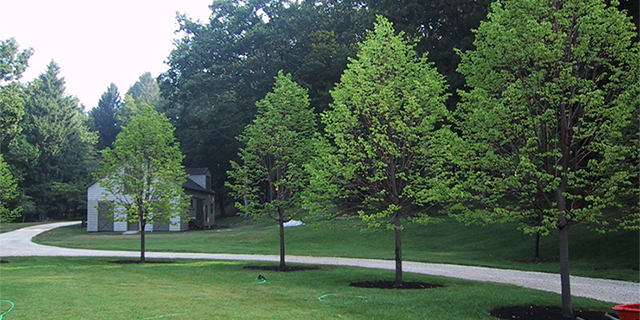Select the Right Tree for Each Location.
Selection of trees depends on the desired effects and the purpose the tree(s) will satisfy in your landscape. Will they attract birds and other wildlife to the area? Create Shading on a patio or house? Screen an unsightly view? Enhance the view of the house? Identify an entrance or exit?
Trees should provide contrast and relief from surrounding buildings and create seasonal interest in areas near the home. You should also consider the following when selecting a tree… Hardiness (the plant’s ability to survive extremes of winter and summer). Mature height and spread. Growth rate. Cleanliness. Type of root system. Moisture and fertilizer requirements (soil condition). Maintenance requirements. Availability. Ornamental effects, such as branching habit, texture and color of bark, flowers, fruit and foliage. And whether the tree is evergreen or deciduous.
We do a close analysis of the specific site to determine the susceptibility or resistance to environmental conditions such as… Disease and insect problems that may limit your selections. Prior use of the planting site. Soil conditions such as poor drainage and high or low pH. The presence or absence of channelized winds. The location of utilities both above and below ground because they are site conditions that dictate plant choice and location. And the relationship of the [plant to roads, walkways and security lighting.
Where to plant?
The space available at the specific site and the mature tree size are important considerations and addressing these limits will go a long way towards reducing maintenance costs.
It is not generally recommended not to plant trees that will grow higher than 25 feet or taller under overhead power-lines.
Do not forget underground utilities. Out-of-sight does not mean they do not have to be serviced at some point. Permamnet plantings such as tress should be spaced to allow utility service. Ground-level utility structures such as transformers and individual service connections require space to be serviced. A minimum of 10 ft clearance after the tree has grown to maturity will help avoid any possible electrical hazards.

